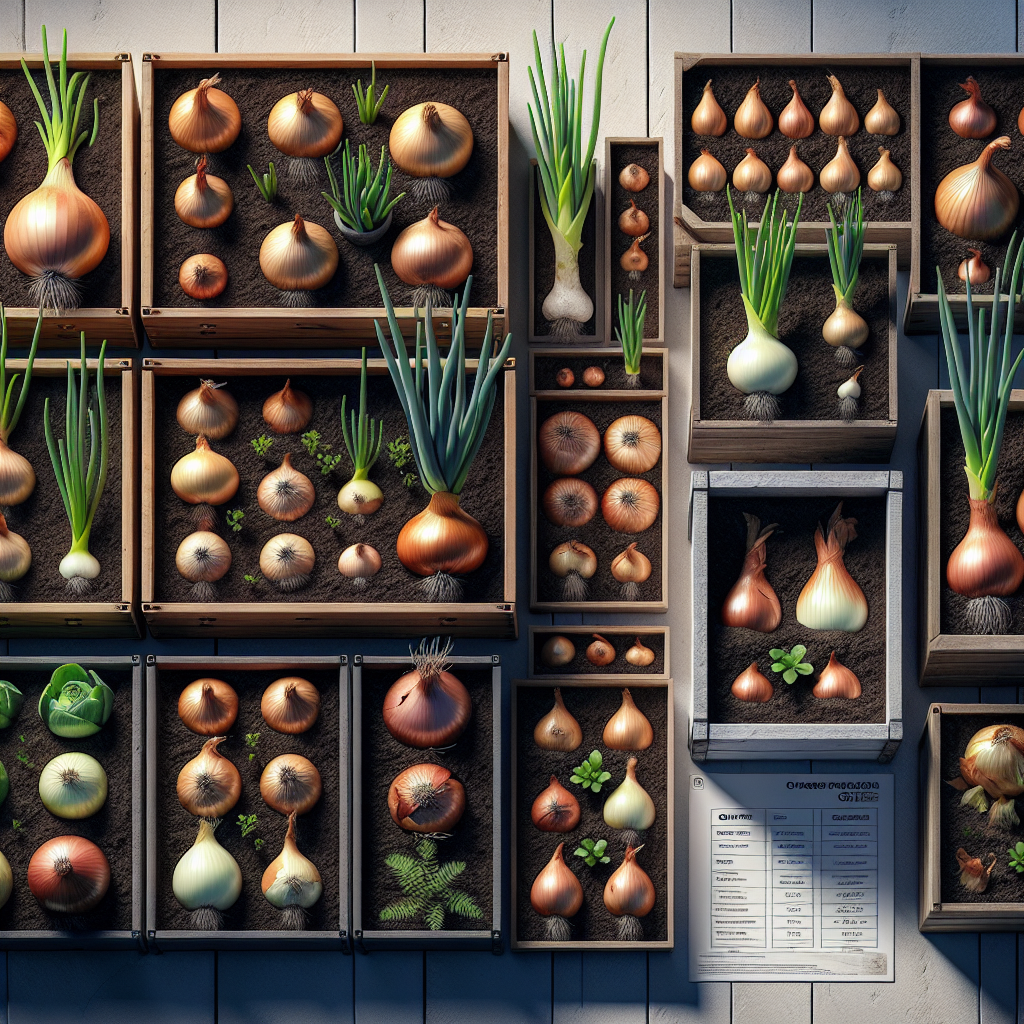Onions are a versatile and popular vegetable that can be grown in containers, making them a great option for gardeners with limited space. With the right care and attention, you can cultivate a variety of onions in containers, from sweet to spicy, red to yellow. In this guide, we will explore the different varieties of onions you can grow in containers and their unique needs.
Varieties of Onions
There are many varieties of onions to choose from when growing them in containers. Some popular options include:
1. Yellow Onions – Yellow onions are one of the most common varieties of onions grown in containers. They have a mild flavor and are great for adding depth to dishes like soups and stews.
2. Red Onions – Red onions have a slightly sweeter taste than yellow onions and add a pop of color to dishes like salads and sandwiches.
3. White Onions – White onions have a sharp flavor that is perfect for salsas and pickled dishes.
4. Sweet Onions – Sweet onions have a higher sugar content than other varieties, giving them a milder flavor that is great for eating raw or caramelizing.
5. Shallots – Shallots are smaller, mild-flavored onions that are perfect for adding depth to dishes like sauces and dressings.
Growing Onions in Containers
When growing onions in containers, it’s important to choose the right size container for the variety you’re planting. Onions have shallow roots, so a container that is at least 6 inches deep should be sufficient. Make sure your container has drainage holes to prevent waterlogging, which can cause root rot.
Fill your container with well-draining potting soil mixed with compost or fertilizer to provide your onion plants with the nutrients they need to thrive. Plant your onion sets or seedlings about 1 inch deep and space them 3-4 inches apart to allow room for growth.
Onions prefer full sun but can tolerate some shade. Make sure your container is placed in an area that receives at least 6-8 hours of sunlight per day.
Water your onion plants regularly, keeping the soil moist but not waterlogged. Onions do not require as much water as other vegetables, so be sure not to overwater them.
Fertilize your onion plants every few weeks with a balanced fertilizer to promote healthy growth. You can also side-dress your plants with compost or fertilizer midway through the growing season.
Harvesting Onions
Onions can take anywhere from 90 days to 9 months to mature, depending on the variety you’re growing. When the tops of your onion plants turn yellow and start to dry out, it’s time to harvest them.
To harvest your onions, gently pull them out of the soil by grasping the tops and lifting them out carefully. Allow your harvested onions to dry out in a cool, well-ventilated area for several days before storing them.
Storing Onions
Once harvested, store your onions in a cool, dark place with good air circulation, such as a pantry or cellar. Avoid storing onions near potatoes or fruits like apples, as they release ethylene gas which can cause onions to spoil faster.
You can also braid your onion tops together and hang them up in a cool place for long-term storage.
In conclusion
Growing onions in containers is a rewarding experience that allows you to enjoy fresh-from-the-garden produce even if you don’t have much outdoor space. By choosing the right variety of onion for your container size and providing proper care and attention throughout the growing season, you can enjoy a bountiful harvest of flavorful homegrown onions all year round.
Overall this informative guide will help aspiring gardeners get started on their journey towards cultivating delicious homegrown produce from various types of onion varieties grown within their urban garden settings!













